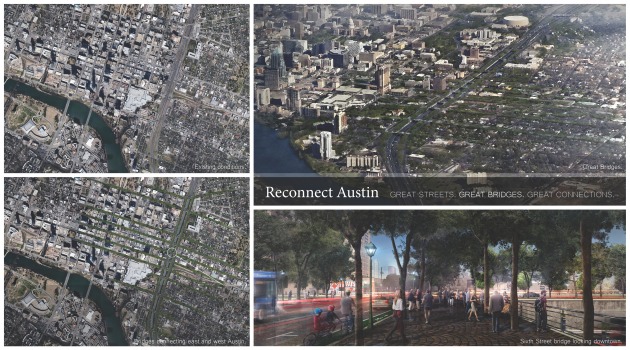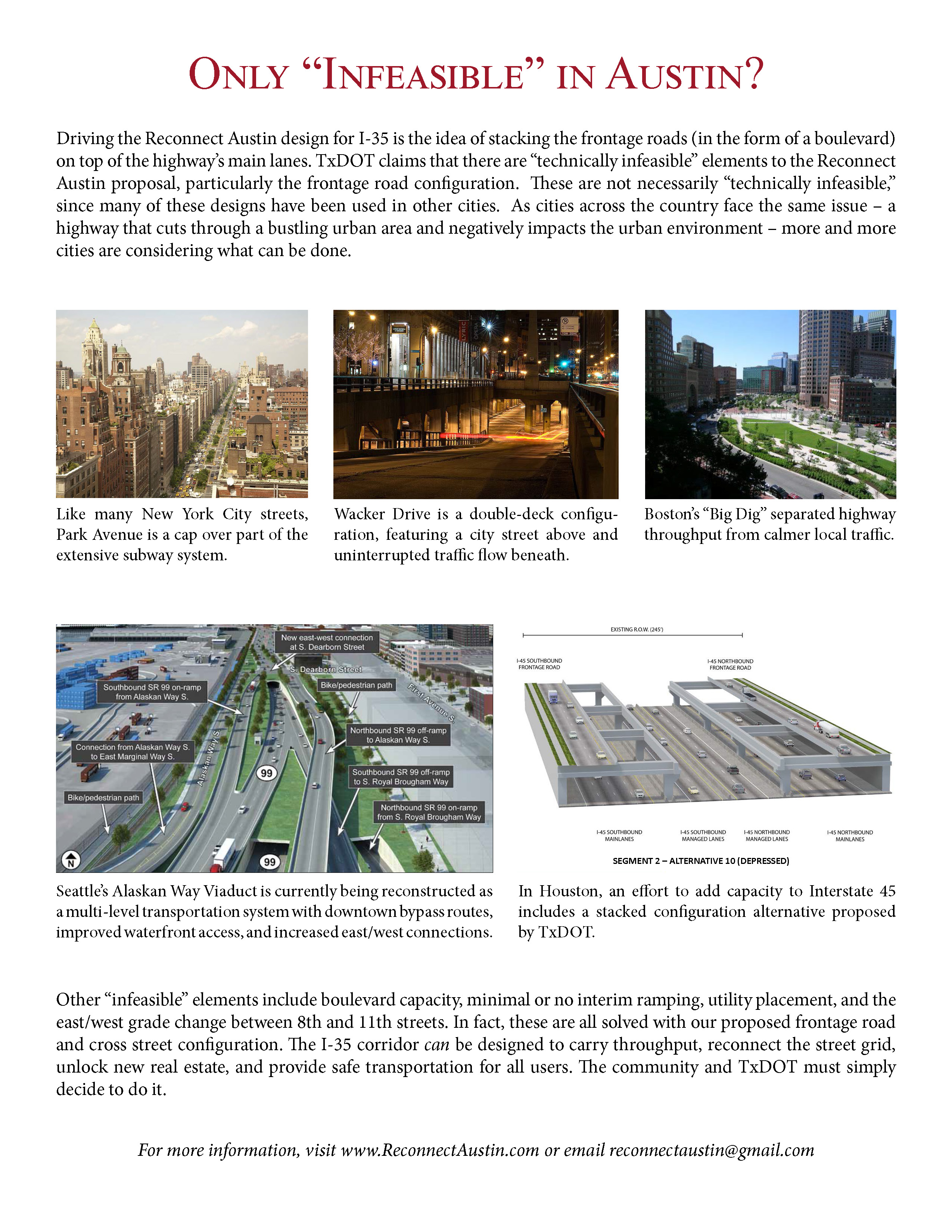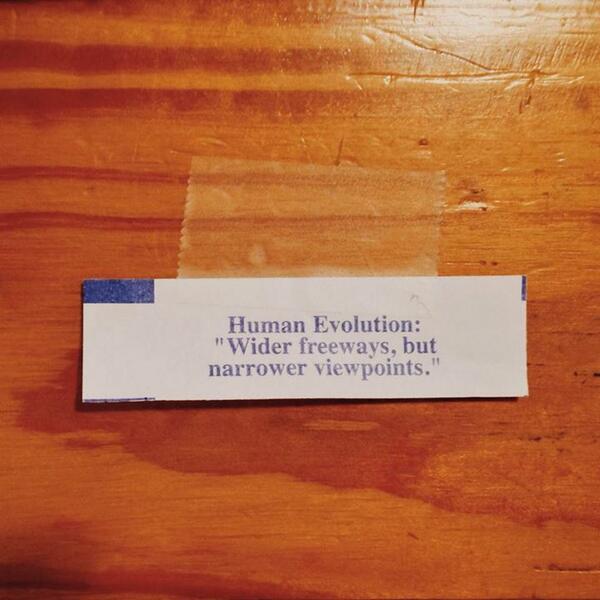Two crucial press releases came out of the TxDOT offices at the end of last week. Both address East/West connectivity in the I-35 corridor, and show positive movement towards solving neighborhood issues.
“To that end, TxDOT is asking for feedback from stakeholders living in neighborhoods adjacent to the roadway. … Information gathered from the survey will be used by the project team to better understand east/west connectivity issues and other special concerns of the neighborhoods.”
This I-35 survey is available online: https://www.surveymonkey.com/s/Mobility35NeighborhoodSurvey
The second major announcement was a direct result of neighborhood feedback on TxDOT’s Implementation Plan over the past few months:
“In response to stakeholder concerns regarding the initial proposals, TxDOT, in partnership with the city of Austin, has worked to develop alternative concepts that address the neighborhoods’ needs for east/west connectivity while also satisfying mobility needs within the corridor. As a result, TxDOT is pleased to announce Woodland Avenue and St. Johns Avenue are to remain open to vehicle traffic and closure is no longer under consideration.
“The refined concepts [for Woodland and St. John’s] can be found at www.mobility35.org/solutions. The revised concepts will be reflected in the planned 2014 update to the Mobility 35 Plan.”
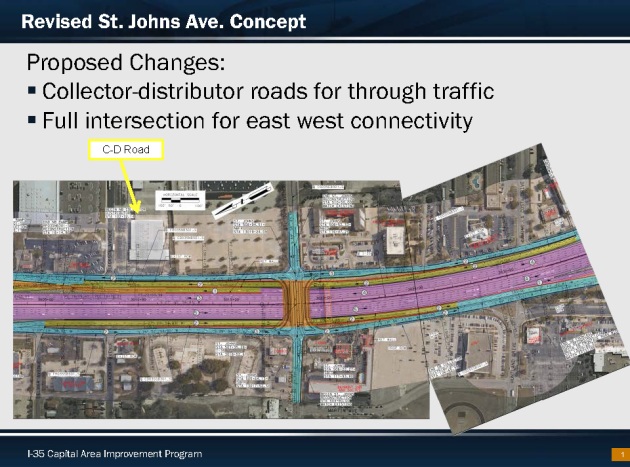
TxDOT’s New Proposal for St. John’s Avenue
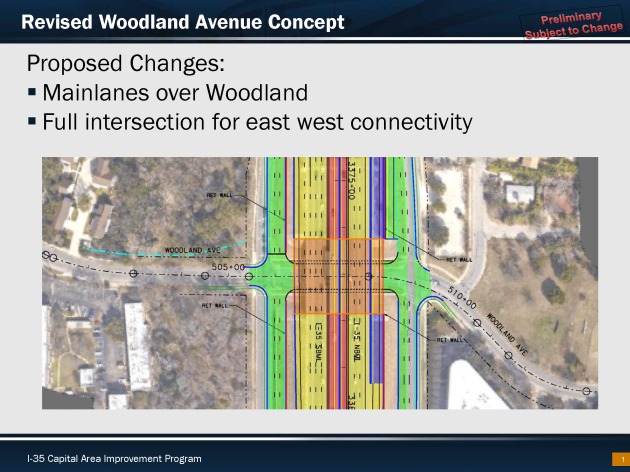
TxDOT’s New Proposal for Woodland Ave
